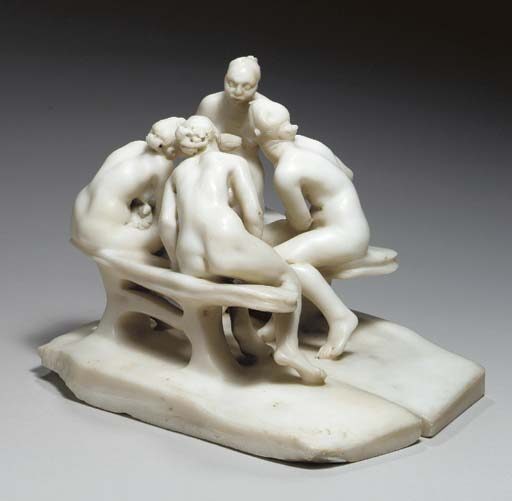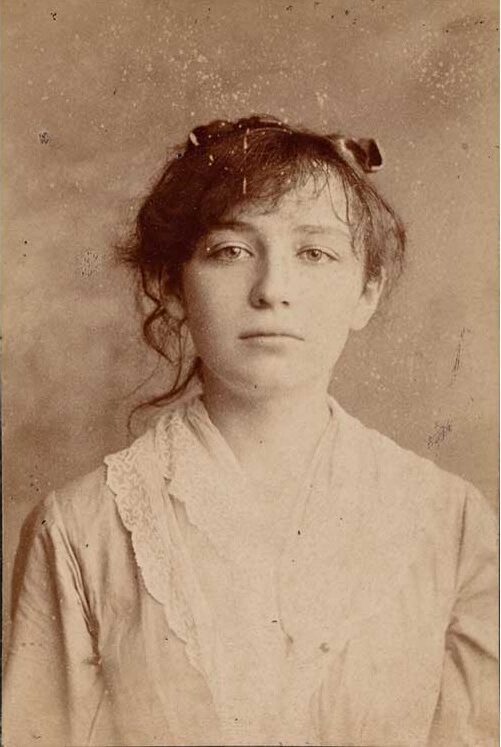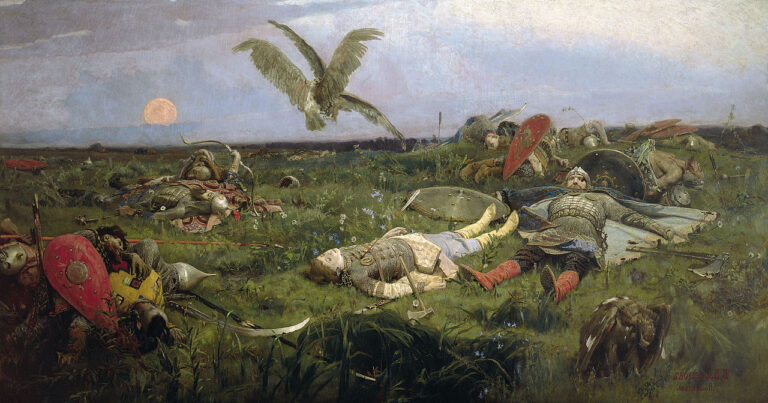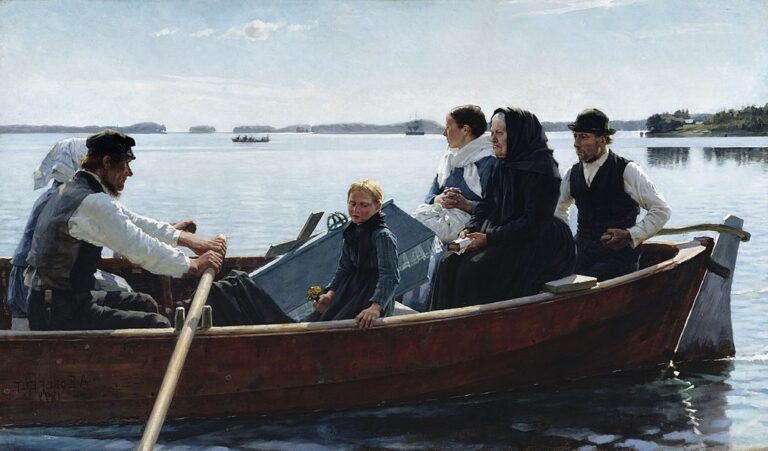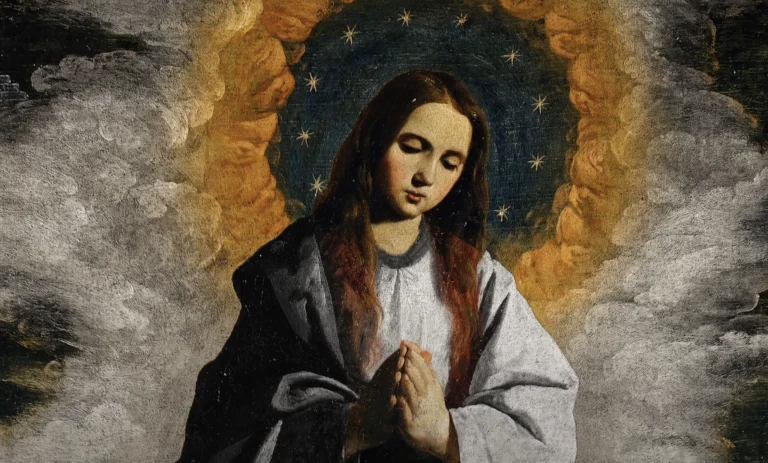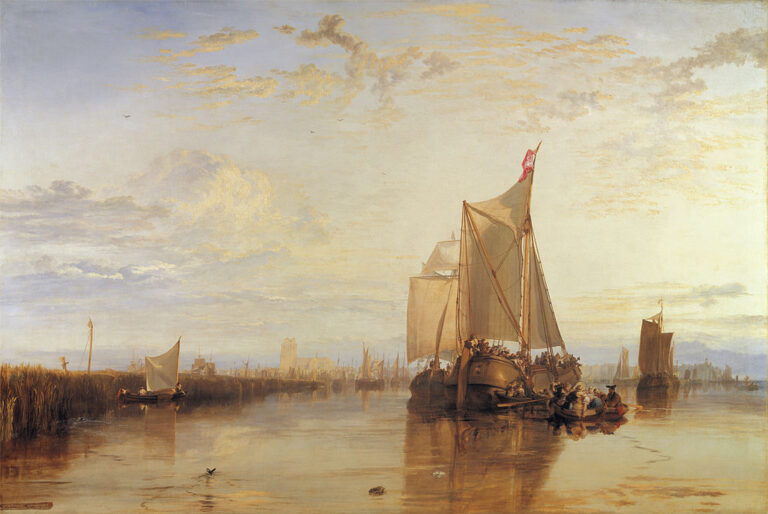Camille Claudel Artwork: A Journey Through Her Sculptural Genius
Born: December 8, 1864; France
Died: October 19, 1943; France
Art Movement: Impressionism
Nationality: French
Influenced By: Alfred Boucher and Auguste Rodin
Art institution: Académie Colarossi, Paris, France
Camille Claudel Artwork: A Journey Through Her Sculptural Genius
Life and Work of Camille Claudel
Camille Claudel was a trailblazing French sculptor. Her striking works in bronze and marble continue to captivate audiences. Her journey was marked by significant educational endeavors, influential collaborations, and a lasting impact on the art world.
Early Years and Education

La Petite Châtelaine (1892) by Camille Claudel
Camille Claudel showed artistic talent from a young age. Encouraged by her father, she studied sculpture in Paris. She also attended the Académie Colarossi, an alternative to the École des Beaux-Arts. Alfred Boucher, a family friend and accomplished sculptor, mentored her, noticing her potential early on. Her brother, Paul Claudel, a writer and diplomat, supported her artistic endeavors. Despite facing societal constraints as a female artist, Claudel’s determination led her to explore innovative techniques and styles.
Collaboration with Auguste Rodin
Claudel’s relationship with Auguste Rodin, one of the most renowned sculptors of the time, profoundly impacted her work. Rodin was impressed by the realism and depth of her sculptures and invited her to join his studio in 1883. Working closely with Rodin, Claudel contributed to major projects like “The Gates of Hell.” Known for her unique approach, pieces like “The Waltz” and “The Mature Age” showcased her talent. Their professional relationship, however, became complicated by personal dynamics, leading to tension and ultimately affecting her career.
Later Years and Legacy

Rêve au Coin de Feu (1899) by Camille Claudel
In her later years, Claudel struggled with familial and societal pressures. Her family, other than her supportive father, viewed her chosen path critically. Mental health challenges led to her being confined in a psychiatric institution in Montparnasse for the last 30 years of her life. Despite these struggles, her work gained recognition posthumously, especially following exhibitions in the 20th century. Today, her sculptures are celebrated at the Camille Claudel Museum in Nogent-sur-Seine. Her legacy endures, firmly establishing her as a pioneering figure in the art community.
Major Themes in Claudel’s Art
Camille Claudel’s art is characterized by her rich depiction of motion and deep expression of human experiences. Her works often explore the balance between chaos and grace, capturing moments of profound emotion and contemplating themes of fate and fortune.
Movement and Emotion
Claudel masterfully used movement to express raw human emotion in her sculptures. Her pieces often capture figures in dynamic poses that convey a sense of life and energy. This approach is evident in works like “The Waltz,” where flowing lines create a feeling of rhythm and fluidity. Claudel’s attention to detail heightens the emotional depth, making viewers feel the intensity of interactions and the turbulence of feelings portrayed in her art.

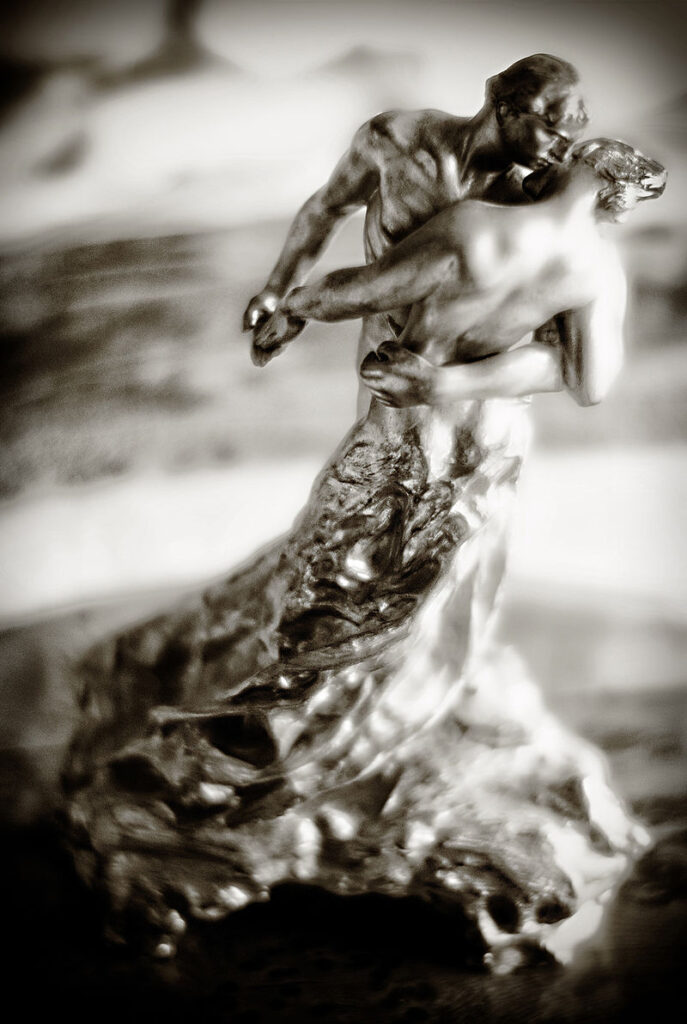
Her ability to capture subtle gestures and expressions creates a bridge between the physical form and the inner experience. These elements reveal her interest in how motion and emotion intertwine, offering a narrative that is as much about the figures’ psychological states as it is about their physical interactions.
Human Destiny and Fortune
Claudel frequently addressed themes of human destiny and fortune, reflecting on the unpredictability of life. Her sculpture “The Age of Maturity” symbolizes the struggles of time and the inevitability of change. This piece portrays a poignant scene that speaks to the uncertain nature of human destiny and the passage of life stages.
Fortune and its often capricious nature is another recurring theme. Claudel used metaphor and symbolism to explore how luck and fate influence human journeys. Through her art, she commented on the tension between control and the forces that shape our paths, inviting observers to reflect on their own experiences with destiny.
Claudel’s Artistic Style and Technique
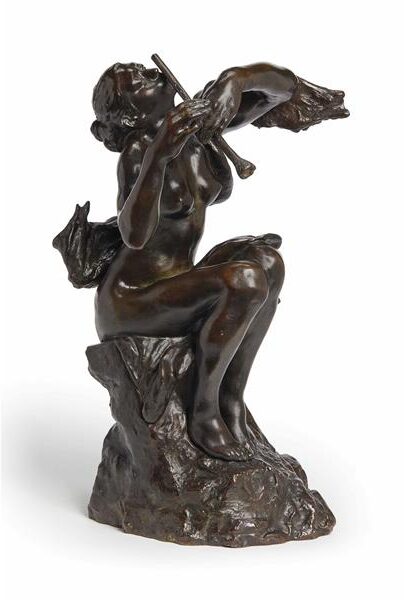
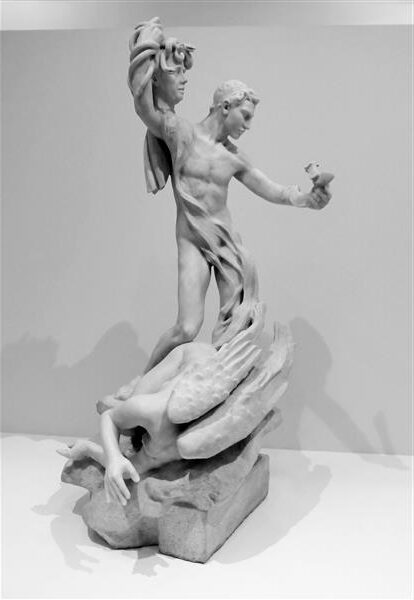
Camille Claudel’s sculptures are characterized by a unique blend of realism and emotive expression. Her choice to transition from clay to more robust materials like bronze and marble and the subtle influence of Impressionism on her work added dynamism to her portrayal of the human form.
The Transition from Clay to Bronze and Marble
Claudel initially worked with softer materials like clay and plaster. These materials allowed her to experiment with form and expression. As she developed her style, she began using bronze and marble. These durable materials gave her sculptures a lasting presence and enhanced the detail in her work.
She frequently depicted the female figure with precision, portraying both strength and vulnerability. The use of bronze enabled her to capture intricate details, while marble provided a smooth finish that complemented her subjects’ grace.
Claudel’s move to more enduring materials also aligned with her ambition to create significant, impactful pieces. Distinct works such as “The Waltz” and “Clotho” demonstrate her mastery in these media, reflecting both her technical skill and emotional depth.
Influence of Impressionism
While primarily a sculptor, Claudel’s work shows elements of Impressionism, especially in her ability to capture fleeting moments. She applied this style to sculpture, making her figures appear dynamic and alive. This influence is evident in the textured surfaces of her bronze pieces, which mimic the brushstrokes of Impressionist painters.

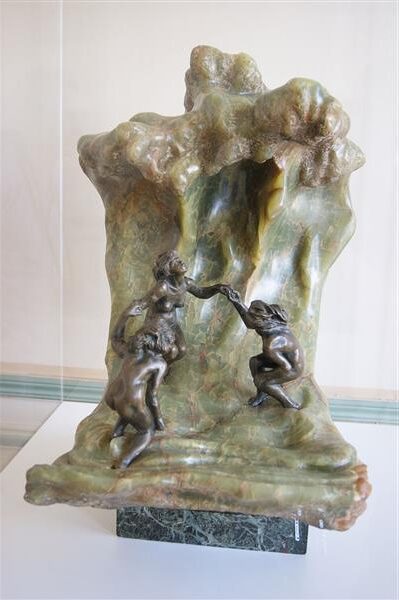
Her impressionistic approach also involved creating sculptures that seemed to move with light and shadow. This technique brought a new layer of expressiveness to her work. Claudel focused on subtle gestures and postures, capturing emotions and interactions in her female figures. Her approach sets her creations apart as vivid and relatable pieces rather than static forms.
Key Works and Sculptures
Camille Claudel’s sculptures showcase her remarkable talent and unique approach. Her works often focus on human emotions and forms, using materials like bronze, marble, and plaster. Some of her most acclaimed pieces include dynamic expressions in works such as The Waltz and The Age of Maturity.
The Waltz and The Age of Maturity
The Waltz is a vivid representation of movement and intimacy. Crafted in bronze, it shows a couple caught in a dance, their bodies intertwined. The fluidity and grace in this work highlight Claudel’s skill in capturing human emotion.

The Age of Maturity (1899) by Camille Claudel
The Age of Maturity, another of her significant works, delves into themes of transition and aging. Displaying a trio of figures, this sculpture suggests a complex narrative of life moving towards maturity. The central figure appears to be pulled away, perhaps symbolizing the inevitable passage of time.
Clotho and The Implorer
Clotho represents one of the Fates from Greek mythology. This sculpture, depicting an old woman entangled in threads, is powerful in its portrayal of destiny and time’s grip on life. The choice of bronze adds gravity to the piece, highlighting the tension in the figure’s posture.
The Implorer (or L’Implorante) shows a kneeling woman with an outstretched hand, seemingly pleading. This piece emphasizes vulnerability and desperation, imbued with a strong emotional charge. The sculpture’s detail and realism contribute to its impactful presence.
Lesser-Known Works
Among Claudel’s lesser-known works, Young Girl with a Sheaf presents a serene portrayal of a girl holding a bundle of wheat. The simplicity and elegance of this sculpture reflect the purity and beauty of youth.

Young Girl with a Sheaf (1890) by Camille Claudel
The Chatterboxes and Torso of a Crouching Woman offer a more subtle exploration of the human form. The Chatterboxes captures social interaction, while Torso of a Crouching Woman draws attention to the raw physicality and strength of the human body. These works, although not as widely recognized, demonstrate Claudel’s versatility and her deep engagement with the human experience.
Exhibitions and Influence on Sculpture
Camille Claudel, a groundbreaking sculptor, showcased her revolutionary approach through prestigious exhibitions. Her deep connections with prominent artists and institutions left a significant mark on the sculpture world. Her impact resonates with contemporary art institutes, highlighting her unique contributions to modernism.
Sculptors’ Artistic Association and Influences
Camille Claudel’s influence on sculpture began with her association with notable sculptors like Auguste Rodin. Her collaboration with Rodin offered her insights into innovative techniques and materials. Though their personal relationship was turbulent, it enriched her artistic vision.
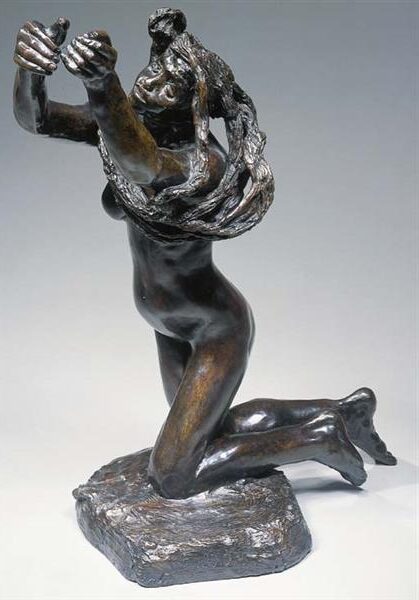

Her work often featured daring and emotive portrayals of the human form. Critics and fellow artists recognized the uniqueness of her genius. Her sculptures in bronze, marble, and plaster became symbols of artistic rebellion, inspiring many emerging artists.
Museé Rodin Retrospective
The Musée Rodin in Paris has hosted retrospectives that honor Claudel’s remarkable talent. These exhibitions provide a comprehensive look at her career, showcasing her skillful handling of texture and form. The museum houses many of her works, reflecting her significant relationship with Rodin.
Retrospectives highlight her development as an artist, with pieces like “The Waltz” and “The Age of Maturity.” These works display a skillful blend of expression and innovation. Visitors gain insight into her journey and the challenges she faced in a male-dominated field.
Camille Claudel in Modern Art Institutes
Modern art institutes, such as the Art Institute of Chicago and the Getty Museum, have recognized Claudel’s contributions with major exhibitions. Her work is presented to new audiences, contributing to a reevaluation of her legacy. These institutions aim to elevate her profile among the greats of modern sculpture.


Exhibitions explore how her art challenged conventions and inspired future generations of sculptors. By featuring sculptures like the “Torso of a Crouching Woman,” Claudel’s mastery is celebrated. Her ability to convey raw emotion continues to captivate and influence artists globally.
Frequently Asked Questions
Camille Claudel was a talented sculptor whose work was often viewed in the context of her relationship with Auguste Rodin. Her legacy includes notable sculptures and a museum dedicated to her art.
What is the relationship between Camille Claudel and Auguste Rodin?
Camille Claudel became an apprentice in Rodin’s workshop in the late 1880s. They collaborated on many projects and had a complex romantic relationship.
How did Camille Claudel contribute to the arts?
Her sculptures broke new ground with their emotional depth and dynamic compositions. She is considered a pioneer in modern sculpture, influencing artists of her time and beyond.
What are the notable sculptures of Camille Claudel?
Some of her most famous works include “The Age of Maturity,” “Sakuntala,” and “The Waltz.” These pieces showcase her unique style and attention to detail.
What were the circumstances surrounding Camille Claudel’s death?
Camille Claudel spent the last 30 years of her life in a mental asylum. She passed away in 1943 and was buried in a communal grave, largely forgotten until her art was rediscovered later.
Where can one view the artworks of Camille Claudel?
Her works can be seen at the Musée Camille Claudel in France, which opened in 2017. Some of her sculptures are also in other museums and private collections around the world.
Has Camille Claudel been the subject of any films or documentaries?
Yes, her life and art have been portrayed in films such as “Camille Claudel” (1988) starring Isabelle Adjani. Documentaries have also explored her relationship with Rodin and her artistic achievements.

